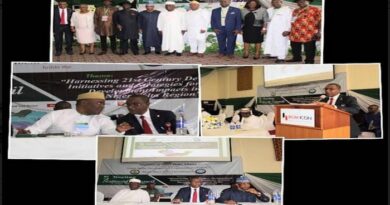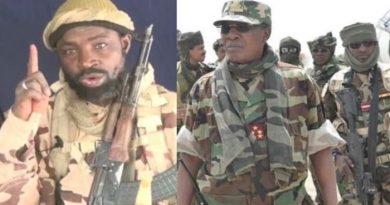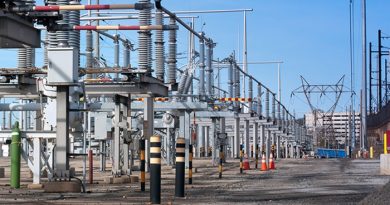Osinbajo meets Niger Delta leaders on FG vision for the region
Acting President Yemi Osinbajo on Thursday met with leaders of Niger Delta under the aegis of the Pan Niger Delta Forum (PANDEF) at the State House, Abuja where he presented the fact sheets on update and progress made in Federal Government’s new vision for the Niger Delta.
The meeting which came at the heels of the November ultimatum given to the Federal Government to open dialogue with the group on its 16-point demand or it would withdraw from negotiations with the Federal Government.
Here is a brief fact-sheet as presented by Professor Osinbajo:
1. The Federal Government has started the process of replacing illegal refineries in the region with modular ones, including options on how to involve the communities as shareholders in the proposed Modular Refineries. Ground-breaking of the first set of such refineries are expected in the 4th quarter of the year.
In its operations, FG will supply crude to the local refineries at reasonably considered price, as an incentive to stop the current practice whereby illegal refiners vandalise and steal the crude. Each Niger Delta is expected to host 2 modular refineries each.
2. Similarly, FG has commenced the process for the opening of the Maritime University at Okerenkoko in Gbaramatu Kingdom, Delta state. Already, a 5-man inter-agency committee headed by the Minister of Education is in the final stages for the official opening of the university in the 2017/2018 academic session.
3. FG has released additional N35 billion to step up the Amnesty Programme in the Delta region, which is a specific and significant raise to the 2016 Budgetary allocation to the office. This significant increase is already reflected in the 2017 budget with N70billion allocation.
The Amnesty Office has since paid up all ex-militants backlog of their stipends up to April 2017. School fees for ex-militants studying abroad have been paid up to 80% this July. School fees in Nigeria paid up to 90% this July.
Under the President Muhammadu Buhari administration, the Presidential Amnesty Programme has deployed 1294 beneficiaries in different programmes in different universities across the world. 1230 have graduated; 196 are maritime engineers, 59 pilots, and 120 automobile engineers. It has established partnership with the PRESCOM (Presidential Committee on Small Arms and Light Weapons), UNDP, EU and UNREC to curb the proliferation of small arms and light weapons in the hands of unauthorized persons and groups.
4. To enhance a speedy development and restore peace in the Delta region, FG has revamped the Niger Delta Development Commission to drive the creation of development and infrastructure projects in the region.
5. An initial fund of 1 billion USD has been set aside for the clean-up and environmental remediation of Ogoniland. A sum of USD 200 million will be disbursed yearly for the first five years and work on the project will be conducted in line with international best practices. Already soil and water tests have been done in preparation for the clean-up and 15 technical assistants hired to be part of the work from Ogoniland.
6. To drive infrastructure, the FG has released funds for the continuation of various sections of the East-West Road. As at March 2017, the overall project completion is substantial ( Section I – 99.98%, Section II – I – 78.33%, Section II -II – 67.95%, Section III – 99.22%, Section IV – 97.7%) with Sections I and III completed and due for commissioning. The FG plans to construct health centres in the states and communities of the region. On completion, they will be fully equipped to address some of the health needs of rural dwellers.
This project will place the region as one of the most advanced places in Africa for high speed internet access and reliable communication systems.
7. To further encourage infrastructure development, FG, through the Petroleum Ministry is also exploring with the International Oil Companies operating in the Delta region on how to relocate their operational headquarters to their states of operations as different from administrative headquarters which often has only about 5% of the staff.




